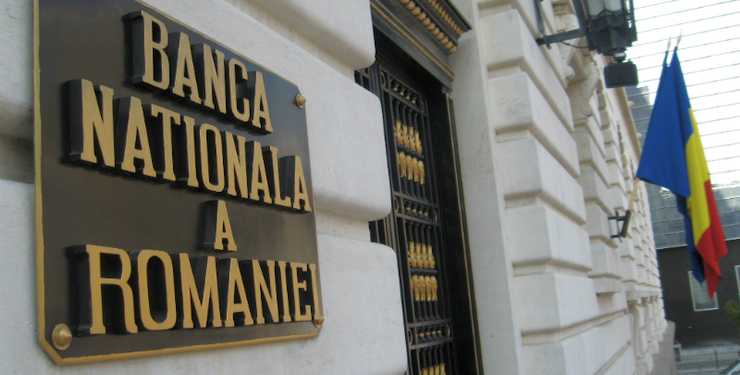The annual inflation rate followed a steeper upward trend in June 2017, standing at a higher-than-forecasted 0.85 percent, against 0.64 percent in the prior month, accounces the National Bank of Romania (BNR). Key interest rate was kepty at 1.75% annually.
Behind this increase stood the evolution of volatile food prices and tobacco prices, as well as the acceleration of core inflation. Their effects were partly offset by the impact of slower annual dynamics of fuel prices. In the absence of the VAT rate cut and other changes in the non-tax fees and charges, the inflation rate would have climbed to 1.9 percent in June 2017 and stayed in the variation band of the flat target.
The annual adjusted CORE2 inflation rate (which excludes the volatile priced goods, satte-managed prices and luxury products) saw, in its turn, a higher-than-forecasted level, reaching 1.42 percent in June 2017, from 1.29 percent in May 2017, on account of a faster pick-up in processed food prices and, to a lower extent, owing to developments in services prices.
The average annual CPI inflation rate turned further less negative to -0.1 percent in June 2017, from -0.2 percent in May 2017; calculated based on the Harmonised Index of Consumer Prices, the annual average consolidated in positive territory at 0.2 percent, against 0.1 percent in May 2017.
Revised economic growth data for 2017 Q1 reconfirm the step-up in the annual dynamics of real GDP to 5.7 percent (from 4.8 percent in the previous quarter). The faster growth rate owed entirely to domestic demand – private consumption expanded by 7.3 percent (contributing 5.3 percentage points to GDP growth) under the impact of fiscal and wage measures and the improvement in employment, whereas gross fixed capital formation posted a slower decline (-1 percent from -14.2 percent, thus causing its negative contribution to shrink to -0.2 percentage points from -3.8 percentage points in the previous quarter). Although still positive, the contribution of net exports to GDP growth dropped significantly (to 0.2 percentage points), amid the narrowing of the favourable spread between the growth rate of exports of goods and services (among the fastest over the last three years) and that of imports thereof.
On the supply side, the main driver of the stronger advance in economic activity in 2017 Q1 was industrial activity, whose annual dynamics of 6.8 percent were the highest in 12 quarters. Statistical data for the first two months of Q2 indicate a step-up in the annual pace of increase of industrial output and new orders in manufacturing, as well as further rapid growth rates of the exports and imports of goods. In the same period, the turnover in trade and services to households saw a fast-paced rise, while the activity in the construction sector witnessed a steeper decline. The annual increase in unit wage costs in industry slowed down versus the previous quarter, against the backdrop of new productivity gains (especially in the auto sub-sector), as well as of the base effect associated with the hike in the minimum wage in May 2016; however, in consumer goods industries, it remained stuck at two-digit levels.
Real monetary conditions have a pronounced stimulative nature. The annual dynamics of credit to the private sector resumed its rise in June, reaching 4.2 percent, from 3.2 percent in the previous month, due largely to a renewed pick-up in the growth of leu-denominated component to non-financial corporations and both local- and foreign-currency loans to non-monetary financial institutions. The share of leu-denominated credit in total private sector loans continued to widen to 60.2 percent, a record high since December 1996. This certifies the improvement in monetary policy transmission, while also helping mitigate risks to financial stability.
In today’s meeting, the NBR Board examined and approved the August 2017 Inflation Report, which incorporates the most recent data and information available. The new scenario of the projection reconfirms the prospects for a speed-up in inflation throughout the forecast interval. Compared to the previous Report, the rising path of the projected annual inflation rate was revised upwards over the entire forecast period, particularly in the short term, remaining, however, within the variation band of the target.
The uncertainties and risks associated with this outlook stem from the domestic and external environment. Domestically, they are compounded by the fiscal and income policy stance, also ahead of the envisaged budget revision.
Turning to the external environment, further relevant are the uncertainties and risks relative to economic growth and inflation developments in the euro area and worldwide, amid Brexit talks and the US economic policies. Monetary policy stances of the major central banks and their implications on the local financial market, also in the present and future economic and financial context in the region, continue to generate uncertainty and risks as well.
Given the current assessments, the information available at present, and the new sources of uncertainty, the Board of the National Bank of Romania decided to keep unchanged the monetary policy rate at 1.75 percent per annum, to further pursue adequate liquidity management in the banking system, and to maintain the existing levels of minimum reserve requirement ratios on both leu- and foreign currency-denominated liabilities of credit institutions.
The decisions aim to ensure and preserve price stability over the medium term in a manner conducive to achieving sustainable economic growth. The NBR Board reiterates that a balanced macroeconomic policy mix and progress in structural reforms are of the essence in preserving a stable macroeconomic framework and strengthening the capacity of the Romanian economy to withstand potential adverse global developments.

